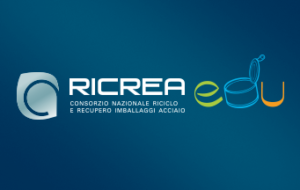The life cycle of steel packaging begins in the steel mill. After obtaining a pure alloy through the smelting process, steel is transformed into semi-finished products such as blooms, billets, slabs and wire rods, destined for the most varied processes. Slabs are transformed into strips, plates and sheet metal of different sizes and thicknesses. Thin sheet metal with a tin or chromium coating is the starting material in the production of various types of packaging. The sheet metal arrives in the form of a roll (coil) at the premises of companies manufacturing steel packaging, such as cans for tomatoes, vegetables and fruit in syrup; cans for fish products, meat or pet food; gift boxes for sweets and spirits; cans for oil; crown caps and lids for bottles and jars; aerosol cans; drums and buckets.
The packaging, purchased by the user companies, is filled and sealed, ready to be transported to the points of sale.
After the purchase and consumption of the products contained, steel packaging has completed its life as a container and is ready to fulfil another important function: to become a secondary raw material, to be recycled, thanks to citizens who separate steel packaging at home and to the Town Council which provides the Separate Waste Collection service. If collected with other materials, steel packaging is separated in sorting platforms via magnetic belts and sent to companies that deal with recycling.
Steel packaging is recycled in a steel mill: after being prepared (which includes cleaning, volumetric reduction and tin-removing operations) and transformed into scrap, it can be melted down to be transformed into semi-finished products that can be used to create new steel “re-products”.



